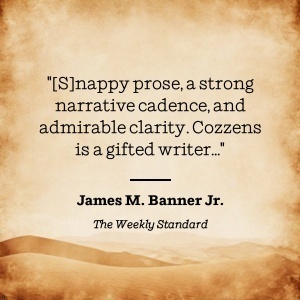

Full description not available



F**R
The Unrelenting Destruction of Indians and Their Way of Life
In 1860, there were dozens of different Indian “nations” scattered throughout the territories west of the Mississippi. Most Indian tribes were hunter-based societies. And those tribes would often move to be nearer to the migratory game they hunted. It was a way of life that required a large amount of land to sustain a small number of people.But the United States was expanding westward. And what did the white man want? Land! Land for homesteading. Land for the railroads. Land to raise cattle. Land for the gold mining that promised instant wealth. And what else did the white man want? Game! Game to feed the railroad workers. Game to acquire furs to sell in the east. Game, just for the “sport”. And finally, game to deprive the Indian of their ability to live on that land.So, two incompatible ways of life. Conflict was inevitable. And, in the long run, the Indians could only lose. The Indians had the land, but the white man had better weapons and a greater population. Some Indians tribes fought each other as much as they fought the white man, whereas the United States had a unified military. But, most important, the Indians could not defeat the United States, but the United States could defeat the different Indians “nations” one nation at a time.For the Indians, defeat resulted in Treaties giving the Indians reservation land, as well as food and supplies (until that reservation land was developed enough to allow the Indians to be self-sufficient). Of course, corrupt administrators might sell the food and supplies elsewhere, pocketing the ill-gained profits themselves (while letting the Indians starve). And, of course, Treaties were not in perpetuity, and the amount of reservation land kept getting smaller.All of the above in probably known, in some measure, by all of us. But the book adds the details, perspective and history to give the reader a depth of knowledge and understanding that I, at least, had not had before.Bottom Line: Highly readable book providing a sad, yet informative, history of our western expansion (at the expense of the native populations).
J**N
An Excellent HistoricalWork
Cozzens has written many excellent histories. Here he delivers an account of the four decades of conflict between the white invaders and the Native American tribes in the west.In doing so, Cozzens is a real straight shooter. Cozzens is clear eyed and does not put on rose colored glasses when it comes to what went on in the west during those decades of struggle. He describes in detail the many treaties that were broken by the whites and shows the lust for land and treasure which often motivated the white encroachments and the evil double dealing that so often occurred because many if not most of the whites involved were evil, incompetent or simply very misguided. At the same time, he takes time to identify and describe those whites, many of whom were Army officers, who were sympathetic to the Indians and tried unsuccessfully to advocate for fair and better treatment of them. Similarly, he describes the horrific losses of the native Americans but, at the same time, he does not seek to unduly glorify the Native Americans by describing them essentially as innocents in paradise - he points out, for example, many of the problems associated with cultures in which the young men of the tribe could only achieve status by preying upon and murdering, stealing from and kidnapping members of other Native American tribes and nearby whites and he does not hesitate to point out instances in which problems arose because of the lies of tribal leaders or the spontaneous violence of hot headed young men. Of course, he sympathetically shows the reactions and ugly choices that had to be made by courageous Native American leaders who simply wanted to be left alone and protect their families and culture.Cozzens’ balanced approach allows you to reflect upon and be angered by the evil done to the Native Americans during this period but the beauty of his history is that you do not get the feeling that he has a revisionist axe to grind or that he is trying to shove an opinion - as opposed to history - down your throat. Highly recommended.
J**Y
Awesome Read – A Fascinating Historical Account
This book is an incredible firsthand look into life among Native Americans during a turbulent time. The author’s storytelling is vivid and immersive, making the struggles and experiences feel real and relatable. It’s both educational and gripping, perfect for history buffs or anyone interested in that era.I’m giving it 4 stars because at times the language and style can feel a bit dated, which slows the pace, but overall it’s a compelling and valuable read that stayed with me long after finishing.Highly recommend if you want an authentic perspective on this unique piece of history.
R**C
A dynamic read
From first page to the last, this book takes you into the history and losses suffered by the Native Americans through broken promises and greed by those who chose to claim this land from those who loved it so much.The skirmishes and divisions of the native peoplesis documented well, and certainly between these people and the soldiers, politicians too,and every page not only takes you to that time but makes you sad about the starvation and lives lost in the name of personal wealth and want for more at the expense of others.The proud warriors and families who wasted not of what they took from the land, as their lives were changed and disrupted forever. As invaders (the settlers from other nations) we tried to submit these people into our beliefs and ways even trying to steal their heritage in the name of “it’s all about us, not them” selfishness.Sometimes it takes something this well written to educate and humble us.An amazing book, so well versed, so well researched.
Trustpilot
3 days ago
2 days ago